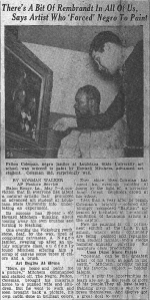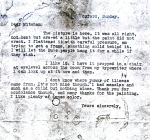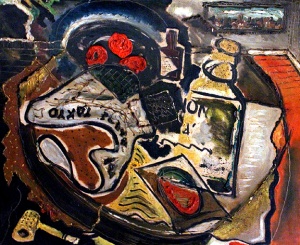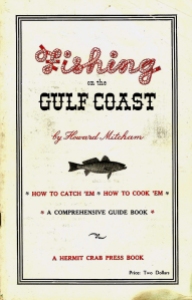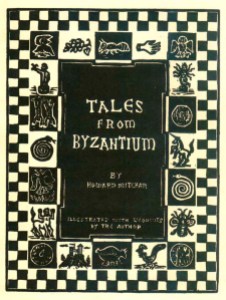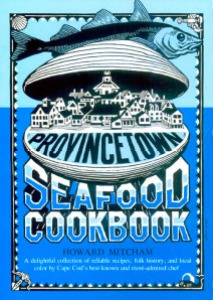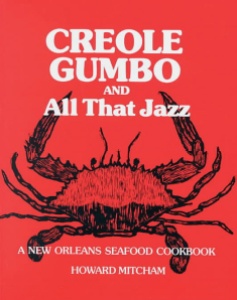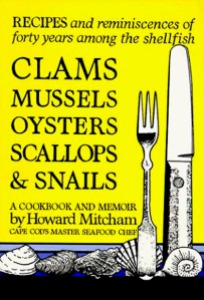I had every intention to buy only one odd movie, but before leaving the internet shopping site I had purchased 151. The movies were cheap, less than 32 cents each; that was my enabler. Hello, my name is Mykki, and I am a schlockaholic.
Like any addict my biggest fear is running out of my addiction. I buy old movies in bulk, like a meth addict buys AA batteries and cold medicine. I once discovered a box of more than a hundred old horror movies with local commercials I recorded in the 80s from NYC and Philly television stations. Now I know how people in Mobile felt when bales of pot would wash ashore in the 70s.
Apparently one January night in 1989 I let my VCR record until it ran out of tape. On the tape, I discovered the second episode of Man from U.N.C.L E directed by Richard Donner and two episodes of The Courtship of Eddie’s Father, which is creepy today because Eddie’s father has the same Bill Bixby understanding and calmness of Bill Bixby’s alter ego to The Incredible Hulk. I pray Eddie doesn’t make him angry; as their housekeeper/nanny, Mrs. Livingston would say, “You wouldn’t like Mr. Eddie’s father when he’s angry.”
I’m so grateful I was raised on real Looney Tunes when Bugs was a smartass and Daffy got his beak blown off. I saw the modern day Looney Tunes; Bugs and Daffy were singing about being healthy cowboys, eating stir-fried vegetables and measuring portions. I found it too disturbing, so I went back to watching Psycho on TCM.

Last night I saw Anthony Newley in the role of Lt. Commander “Spider” Webb (great name, huh?) in X the Unknown (1956). When I was a kid in the 60s, I did a spot-on Anthony Newley impression, but by the 70s my impression was too obscure.
In 1969, I knew a 9th grader who had his yearbook photo listed as Myra Breckinridge. Kids were so sophisticated back then. 7-years later, I had my 11th grade yearbook photo listed as Gator McKluski, certain proof of society’s drastic decline. I remember when AMC was TCM, A&E was Ovation, Biography was History 2, BBC America was PBS and Fox was a walkie-talkie frequency.
My own past has had brushes with real historical celebrates, which I think is the correct term. My mother said her aunt and uncle by marriage (whatever that means) adopted a kid whose parents were killed in a car accident or something. It was rural Kentucky in the 1930s, so the parents may have been killed by Daniel Boone for all I know. Maybe it was Davy Crockett. I always get those two guys confused, so lets just say it was Fess Parker, the actor who played both men on television and in the movies.
So anyway, back to the story of that kid. His name was Harvey Lee Yeary, but with the emergence of Kennedy assassin Lee Harvey Oswald in 1963, Barbara Stanwyck suggested Cousin Harvey change his name to Lee Majors and the rest is history. However, my grandmother denied any family relationship. I once had a brief conversation with Wayne Newton and he is convinced we are cousins because we have the same last name, and his family and my father’s family are from the same small area in Tennessee. However, for Wayne’s sake I deny any family relationship, and the rest is history. Along those same lines, I once wrote a letter to Bobby Goldsboro in hopes of discovering some answers.
“Dear Bobby Goldsboro,
For much of my life I have been troubled by a few questions only you can answer.
First, how did Honey die? You said she was young at heart, kind of dumb and kind of smart but what the heck. Was she hammering a nail with a loaded revolver that day when you were not at home and she was there and all alone and the angels came?
Second, did you bury her next to the tree? You seem to want everyone to see the tree how big it’s grown, but admit it hasn’t been too long, it wasn’t big. What kind of fertilizer do you use? Is it Honey?
Sincerely,
Your Biggest Fan,
Mykki”


I am a huge fan of Japanese kaiju films, more commonly know as giant monster movies although the Japanese to English translation in Godzilla Raids Again (1955) stumbles slightly on American slang.”Ah, shucks” = “Ah, banana horses.” At least that’s what it sounds like to me, so I have a new catch phrase. “AH, BANANA HORSES!”
I wonder if the Japanese make fun of Americans by laughing and screaming, “Ah! It’s Spiderman! Ha! Ha! Ha!” Spiderman…what a joke. WE HAVE GODZILLA!”
Spiderman is a good superhero if you are a 15-year old kid being bullied because you have bad acne, but Superman, now he is and always will be the ultimate superhero. He has all the great superpowers, including being totally unrecognizable by wearing only a pair of glasses.
Ironman? I respect him. He spent billions constructing a suit so he could be more like Superman. Imitation is the most sincere form of flattery. Batman, on the other hand, needs constant surveillance and therapy. As a child, he witnessed his parent’s murder, which understandably cracked his mind and turned him into a demented, murderous Don Quixote. Personally, I prefer my superheroes to be more down-to-earth like I Will Help You Find Your Keys Man.
For me, a sci-fi/superhero loses screenwriting credibility when the jet pack flying, fedora wearing, scientist hero activates his cosmic mega powerful radio space alien communicator and says, “Calling Bob. Calling Bob.” I’m talking to you, Zombies of the Stratosphere (1952).
“He was always so keen on telling me about his experiments.” (Said every girlfriend of a scientist gone mad)
Lines I Hope I Never Have to Use in Real Life
5) “Nobody puts Baby in the corner.”
4) “Open the pod bay doors, HAL.”
3) “Take your stinking paws off me you damn dirty apes.”
2) “Decepticons!”
1) “I see dead people.”
If there’s anything I know about motion pictures it’s that a crying woman driving a ’39 Chevy in the rain always ends badly. Movies have taught me never to trust anyone wearing a monocle. They are Nazi spies. That includes the Monopoly guy and Mr. Peanut. Well, maybe not Mr. Peanut but he is a giant peanut the size of a man and that in itself is just wrong. So I guess what I’m saying here is always avoid Nazi spies and horrifying genetically modified gigantic legumes. They are terrible people.
THINGS I HAVE LEARNED FROM B-MOVIES
1) Prior to 1961, the decision of who will be the first man in space and/or on the moon is always made 5-minutes before liftoff of the atomic rocket. Mission Control is actually only four people, one of whom is always the astronaut’s wife or girlfriend.The only sounds in space are that weird EEE-OUU-WEE-OUU theremin part of Good Vibrations by The Beach Boys, and the machine that goes “BING!”
2) Sometimes the actors are so terrible and the dialogue so awful, you root for the half man/half lizard creature to devour the entire town and emerge victorious over all mankind.
3) If your home is being attacked by a 60-foot spider, close your front door so it doesn’t come inside.

Bullets are useless, so have your local scientist and/or professor ram the spider in the butt with a ’58 DeSoto to distract it. Giant atomically grown arachnids are attracted to giant car tailfins inspired by the jet age. Finally, have the scientist and/or professor build his failed experiment 50 times its normal size. For some reason the larger size makes the experiment function perfectly and that is always the only thing that can kill the monster.
4) The smartest people in town, i.e. professors and/or psychiatrists, have pipes they never smoke. They just like holding the pipe and occasionally placing it in their mouth. This is also the sign of an understanding father who believes the kids did see something out at the old Johnson place, Roy…maybe a spaceman, maybe a blob monster, but he’s sure his son and/or daughter is a good boy and/or girl who just wants to go to the big dance and/or gender reassignment surgery.
5) Vampires and mad scientists are totally unaware of the dangers of open flames. Inevitably, candles and/or Bunsen burns will tip over during a climatic moment, ignite curtains and/or demented and/or hunchback assistants. The flames spread quickly and the damage is not covered by most castle owner’s insurance. Thus, vampires and mad scientist cannot survive a fire.
6) If your dog or cat growls or hisses at your boyfriend or husband, he or she is a space alien or ghost or vampire or general member of the living dead. If this happens to you, breakup immediately or file for divorce or call NASA or Whoopie Goldberg or drive a stake through their heart or start screaming, “The power of Christ compels you! The power of Christ compels you!” If none of those things work, you may want to consider trading the dog or cat for a goldfish.
7) Every film and small town must contain the following characters:
Doug Martin
Betty Morgan
Gramps
Kurt
Gas Station Attendant
Blond Stripper
8) Space women are ROCKIN’ HOT! Oh, you may find the occasional butterface due to too much radiation, but they always have smokin’ hot bods. Space men, on the other hand, are either total creeps, ambiguously gay or both. The gay ones are usually the BFF of the beautiful queen. That appears the case throughout the galaxy even on our own planet, so that my dear friends is why I welcome the coming space alien invasion.

9) Only the greatest scientific minds have alligator habitats in their basements.
10) Prior to 1960, advanced alien life forms out to conquer Earth had no access to television and radio stations. Thus, they contacted the earthlings via public address systems at sporting events. Many of the world’s great scientists and military leaders were also hockey season ticket holders.
11) All low-budget movies about invisible creatures or humanoid space aliens have a costume/special effects department consisting solely of whenever the actors have in their own personal wardrobes.
12) In every pack of marauding zombies, there’s always a woman in a wedding dress. She’s not really a zombie, she just had too much champagne and Red Bull and got carried away in the conga line at the reception.
13) Selling islands to mad scientists interested in human/wild animal gene splicing experiments was a booming business for realtors in the first half of the 20th Century.
And just so you know, a crucifix does not work on Jewish vampires.
from Tales of a 5 & Dime Socialite
©2017 unedited
by Mykki Newton




